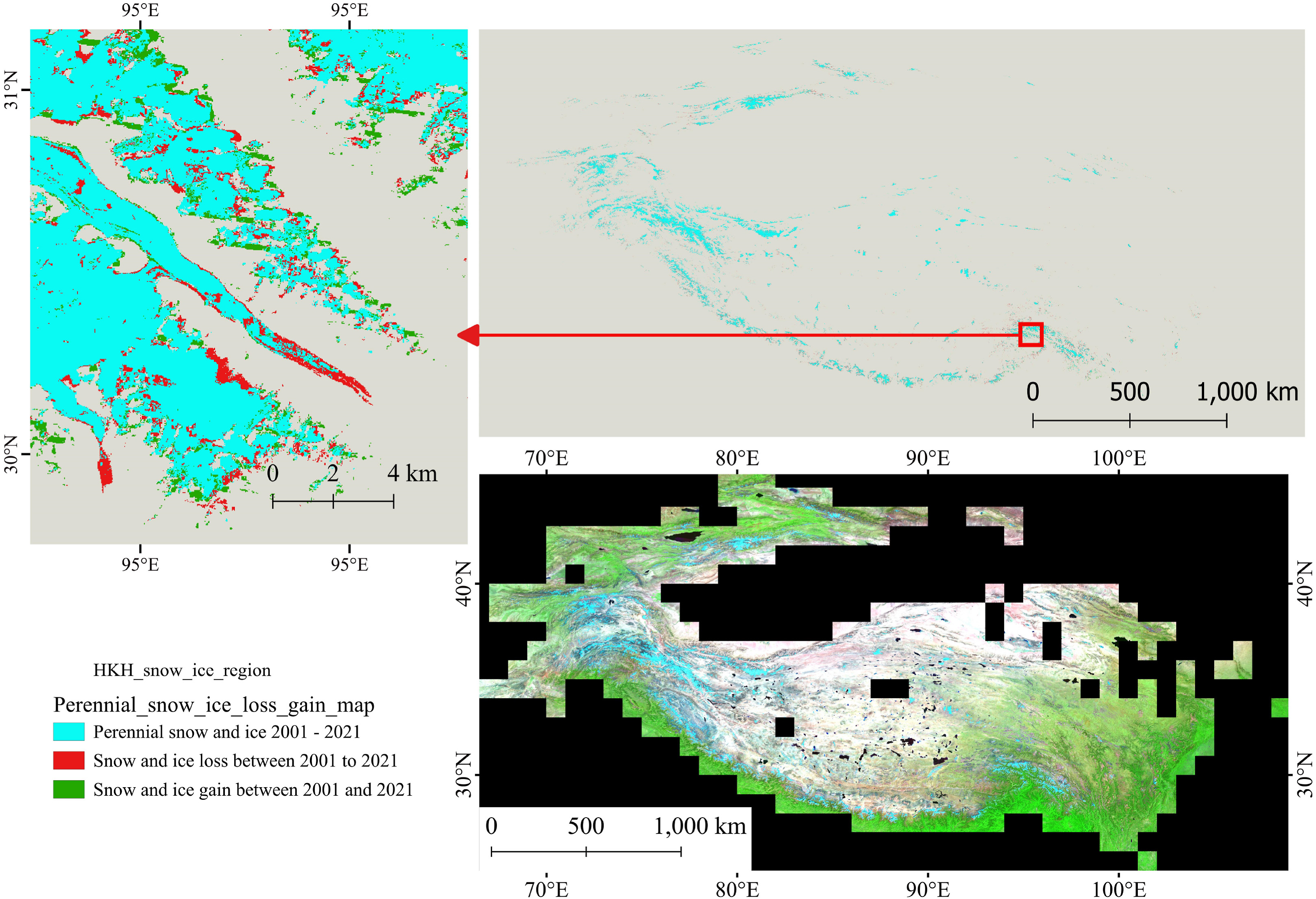Research led by Ahmad Khan highlights a 13% reduction in snow and ice over two decades, with China and Nepal experiencing high losses.
Post-Doctoral Associate Ahmad Khan of the Global Land Analysis and Discovery (GLAD) laboratory has led a study on mapping changes in perennial snow and ice cover in the Hindu-Kush Himalayan region, which has just been published in Remote Sensing Applications: Society and Environment. Co-authors include GEOG Researchers Peter Potapov, Matthew Hansen, Amy Pickens, Alexandra Tyukavina and Andres Hernandez-Serna, as well as Kabir Uddin from the International Centre for Integrated Mountain Development in Nepal and Jawairia Ahmad from Lahore University of Management Sciences in Pakistan.
In this research, Khan and colleagues analyzed changes in perennial snow and ice cover in the HKH region between 2001 and 2021 using 5-year intervals and utilizing GLAD Analysis Ready Data for mapping purposes. Their analysis revealed a significant 13% decline in perennial snow and ice cover in the HKH region during this period.
Among the countries in the HKH region, China experienced the largest reduction in perennial snow and ice cover, with a decrease of 10,654 km². Nepal, on the other hand, had the highest net reduction rate at 31%. Additionally, when considering river basins, the Indus basin saw the greatest loss in perennial snow and ice cover at 24.8%, followed by the Brahmaputra (18.3%) and Tarim (15.7%) basins.
These results underscore the widespread loss of perennial snow and ice across the HKH region. Moreover, the study provides regionally consistent maps and methodology, which are crucial for continued monitoring of snow and ice melt in the area.
Main image: Perennial snow ice loss gain map, courtesy of the paper authors.


